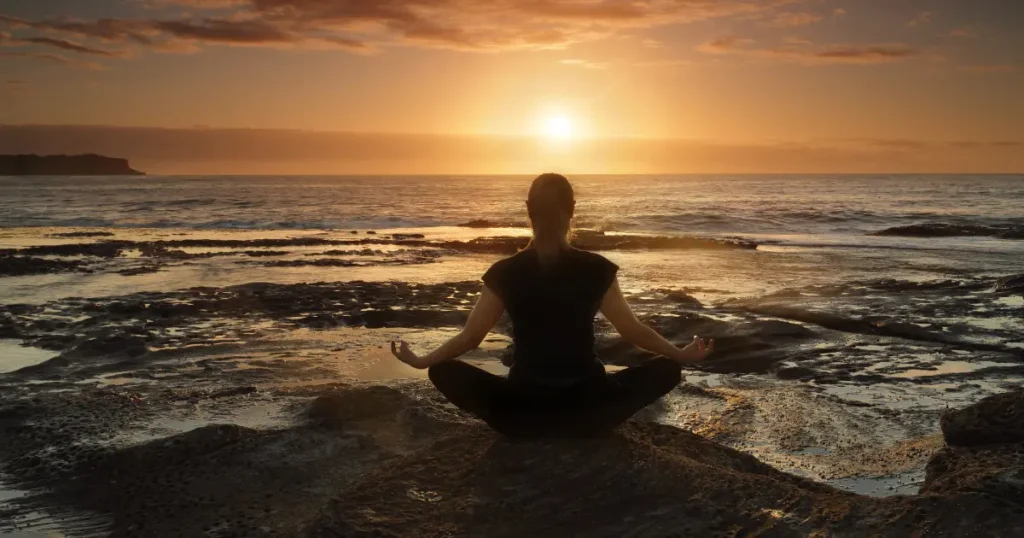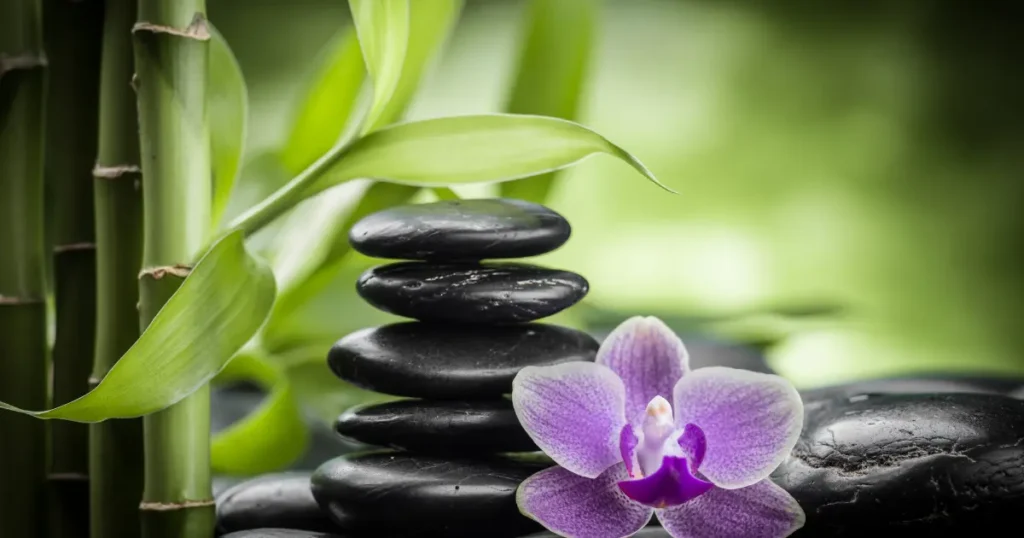Table of Contents
Introduction
- Many cultures around the globe have embraced meditation, an historical workout. As the tempo of cutting-edge life hurries up, increasingly humans are turning to meditation to find peace and readability.
- Meditation serves as a effective tool for boosting mental, emotional, and physical well-being.
- This complete guide will walk you via 10 smooth steps to master Thoughtful pause, making it handy for every body, especially beginners.
What is Meditation?
- At its center, meditation encourages popularity, recognition, and rest. It involves numerous strategies that promote a country of calm and self-interest. Whether you are looking for to lessen stress, beautify consciousness, or join extra deeply with your self, meditation can transform your experience.
- Benefits of Meditation :
The advantages of meditation are enormous and nicely-documented. Here are some key blessings:
Reduces Stress: Regular meditation can substantially lower cortisol degrees, allowing you to lessen strain.
Improves Focus and Concentration: Meditation trains your mind to consciousness higher, main to improved interest in daily responsibilities.
Enhances Emotional Health: Many research display that meditation can increase your temper and reduce symptoms of tension and melancholy.
Increases Self-Awareness: Through meditation, you can advantage a deeper understanding of your self and your idea patterns.
Promotes Better Sleep: Incorporating meditation into your nightly routine can notably beautify sleep high-quality.
1. Finding the Right Space :

It’s crucial to create an inviting and comfy surroundings for meditation. The space need to encourage relaxation and recognition. Here’s the way to create the best putting:
- Choose a Quiet Location: Select a space where noise and distractions may not disturb you. This could be a nook of your house, a lawn, or a non violent out of doors region.
- Comfortable Seating: Your seating have to aid you and sense relaxed. You can sit on a cushion, a chair, or even lie down, relying on what feels high-quality for you.Lighting: Soft, herbal light can beautify the calming impact of your space. If you’re meditating indoors, recollect using lamps with warm bulbs or candles.
- Personal Touches: Adding non-public elements like plants, artwork, or calming scents let you create a serene atmosphere.
2. Selecting the Right Time :

Choosing the proper time for meditation is important for organizing a consistent exercising. Consider these points:
- Morning vs. Evening: Many people find that meditating within the morning allows set a nice tone for the day. Others decide on meditating in the nighttime to wind down and mirror at the day.
- Daily Routine: Try to combine meditation into your each day recurring. Consistency will help expand the addiction, making it simpler to commit.
- Listen to Your Body: Pay interest to the way you experience whilst you are maximum relaxed and least distracted. This might also trade every day, so be bendy.
3. Starting with Short Sessions :

For novices, starting with shorter meditation periods can help you avoid emotions of weigh down. Here’s the way to start:
- Five to Ten Minutes: Start with five to ten-minute periods. This period is manageable and allows you to ease into the exercise.
- Use a Timer: Set a gentle timer in your phone or use a meditation app to preserve music of time. Check the time throughout your practice.
- Gradually Increase Time: As you grow to be greater cushty, often extend your training to fifteen to 20 minutes or more.
4. Choosing a Technique :

Various meditation techniques exist, and exploring exclusive styles enables you locate what resonates excellent with you. Here are some famous alternatives:
- Mindfulness : This method requires you to be aware of the present moment, frequently by means of focusing on your breath.
- “It invites you to observe your thoughts and emotions without judgment.” Many novices discover guided meditation beneficial. You can discover numerous apps and on-line resources that offer guided classes led through experienced teachers.
- This practice specializes in developing an mind-set of affection and compassion towards your self and others. It generally involves repeating terms that express suitable wishes for your self and others.”
- Body Scan: This method includes you that specialize in precise parts of your frame, promoting relaxation and assisting you apprehend bodily sensations.
5. Focus on Your Breath :

- Breathing serves as an crucial factor of most meditation practices. Here’s a easy method to spotting your breath.
- Find Your Position: Sit without difficulty with your back directly. You can also recline if that makes you extra snug.
- Inhale Deeply: Take in a sluggish breath thru your nose, allowing your abdomen to rise thrust as you fill your lungs.
- Exhale Slowly: Gently breathe out thru your mouth or nostril, feeling your stomach lower.
- Continue: Focus in your breath, allowing every inhale and exhale to ground you within the gift second.
- Breathing Techniques to Try: 4-7-8 Breathing: Inhale for 4 seconds, maintain for 7 seconds, and exhale for 8 seconds. This technique allows calm your fearful system.
- Box Breathing: Inhale for 4 seconds, hold for 4 seconds, exhale for 4 seconds, then pause for 4 seconds and maintain it once more for four seconds earlier than repeating.
6. Observing Your Thoughts :

As you meditate, it’s herbal for mind to get up. Instead of looking to suppress them, practice watching them. Here are some hints:
- Acknowledge Your Thoughts: When mind come to thoughts, absolutely be aware them without judgment. You can mentally label them as “questioning” or “planning.”
- Gently Redirect: When you realize your thoughts have wandered, gently manual your interest lower back to your breath or your preferred cognizance.
- Anchor : Practice Patience: Understand that a wandering mind is part of the meditation journey. Be kind to your self and go back to your practice with out frustration.
7. Incorporating Mindfulness into Daily Life :

You can contain Mindfulness into your daily activities in preference to confining it to special exercise times. Here’s how to bring mindfulness into your normal existence:
- Mindful Eating: Take time to experience every chunk of your meal. Pay interest to the flavors, textures and aromas decorate your courting with meals and promote digestion.
- Mindful Walking: As you stroll, consciousness on every step, the sensations on your toes, and the rhythm of your breath. This exercise can be mainly grounding and calming.
- Mindful Listening: When someone talks to you, give them your complete interest. Practice energetic listening with the aid of being gift and engaged with out making plans your response even as they speak.
8. Tracking Your Progress :

Keeping track of your Reflection practice permits you to stay responsibly and be inspired. Here are a few mind:
- Awareness practice Journal : Write down your mind, emotions, and reflections after each consultation. Note any insights you gain, the way you felt before and after, and any challenges you faced.
- Use an App : Numerous meditation apps are to be had that allow you to log your sessions, set reminders, and music your progress over time.
- Set Goals : Consider placing short-term and long-time period dreams for your meditation exercise, which include meditating a certain wide variety of days per week or progressively growing your session period.
9. Overcoming Challenges :

As you begin any new exercise, you may encounter demanding situations along the manner. Here are a few commonplace limitations and techniques to conquer them:
- Restlessness: If you feel restless at some point of Focused breathing , try moving your frame or stretching ahead. you also can take a couple of minutes for aware respiratory before settling into your practice.
- Sleepiness: If you start to experience drowsy, sit up whilst you meditate. Make positive you don’t meditate just earlier than bedtime, as this will make contributions to sleepiness.
- Impatience: Mental stillness is a skill that calls for time to develop. Remind yourself that it’s normal to experience impatient and that development may come regularly. Celebrate small milestones along the way.
10. Exploring Advanced Techniques :

Once you feel snug with the fundamentals of meditation, you would possibly need to discover greater advanced techniques. Here are some to don’t forget:
- Zen Meditation (Zazen): This conventional exercise emphasizes seated meditation and entails concentrating for your breath or staring at your mind at the same time as you sit in a specific posture.
- Transcendental Inner quiet : This technique requires you to silently repeat a specific mantra to calm your mind and create a snug experience of recognition.
- Chakra Conscious relaxation : This practice specializes in balancing the body’s strength facilities (chakras) through visualization, breath, and affirmations.
For REFERENCE : https://positivepsychology.com/meditation-techniques-beginners/
Conclusion :
- Meditation serves as a powerful exercise which could profoundly impact your lifestyles, promoting intellectual readability, emotional balance, and physical nicely-being. By following those 10 simple steps, you may start your journey to getting to know meditation. Remember that everybody’s enjoy is specific, so be conscious engage with yourself as you discover this transformative exercising.
- Embrace the technique, and over time, you may uncover the numerous benefits that Spiritual practice offers. Whether you meditate for five minutes or an hour, what topics maximum is locating a practice that feels proper for you. Happy meditating!
